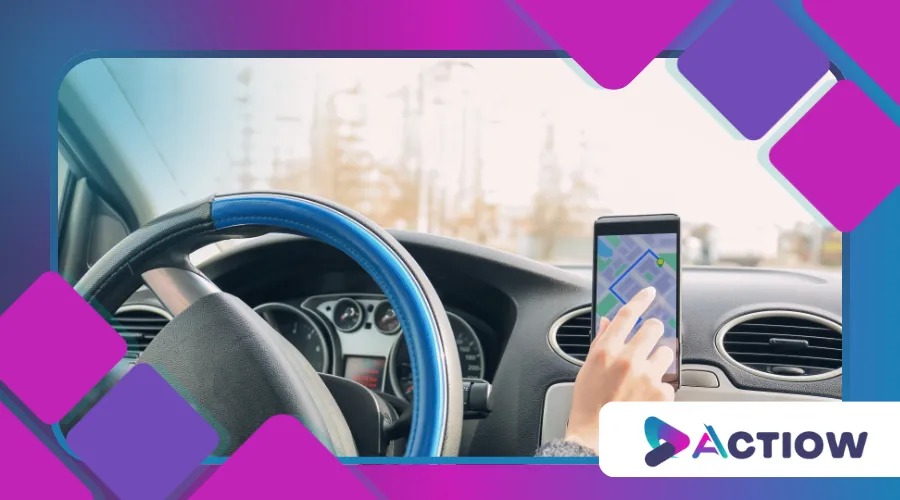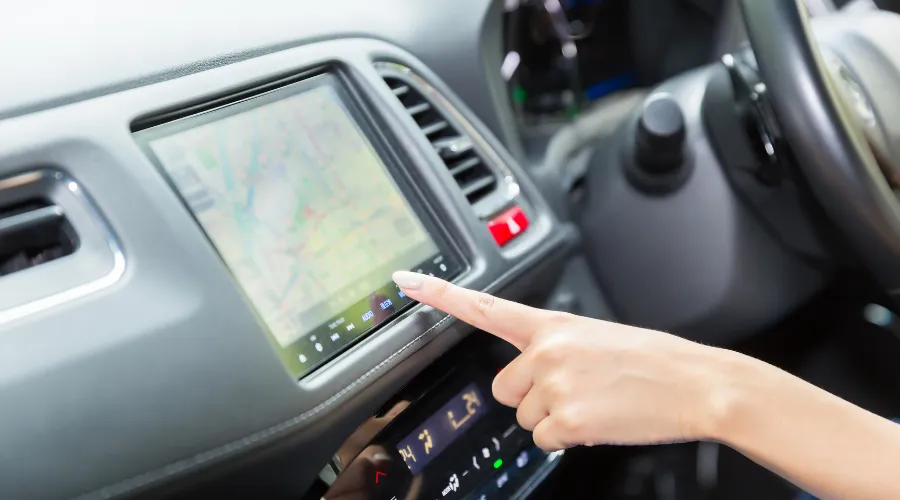GPS Navigation Systems: How to Choose the Most Accurate

Anúncios
GPS navigation systems have revolutionized the way we travel, offering real-time directions, traffic updates, and route optimization.
But with countless options available—from built-in car systems to smartphone apps—how do you pick the most precise one for your needs?
Accuracy depends on multiple factors, including satellite connectivity, software algorithms, and real-time data integration.
Anúncios
This guide explores the key features that define top-tier GPS navigation systems, compares different types, and provides expert tips to help you make an informed choice.
As technology advances, the capabilities of GPS systems continue to evolve.
New features such as augmented reality integration and voice-activated controls are becoming standard, enhancing user experience and safety while driving.
Understanding these innovations can help you choose a system that not only meets your current needs but also adapts to future advancements in navigation technology.
Why Accuracy Matters in GPS Navigation Systems
A reliable navigation tool does more than just plot a route—it adapts to road closures, calculates the fastest path based on live traffic, and minimizes errors in remote areas.
According to a 2023 study by Geospatial World, modern GPS navigation systems achieve an average accuracy of 3-5 meters in urban areas, but this can drop significantly in dense cities or rural zones with poor signal reception.
The importance of accuracy cannot be overstated, especially for professional drivers who rely on precise navigation for timely deliveries.
Inaccurate directions can lead to missed appointments, increased fuel costs, and unnecessary stress.
Moreover, as autonomous vehicles become more prevalent, the demand for highly accurate GPS systems will only grow, underscoring the need for continuous advancements in technology.
Investing in a high-accuracy GPS system can save both time and money in the long run.
Additionally, many modern systems offer features that learn from past routes, allowing users to optimize their travel patterns over time.
+ Cars with Artificial Intelligence: What to Expect in the Future?
Key Factors Affecting GPS Accuracy
| Factor | Impact on Accuracy |
|---|---|
| Satellite Signal Strength | Weak signals (due to tall buildings or tunnels) reduce precision. |
| Real-Time Traffic Data | Systems with live updates avoid congested routes. |
| Map Updates | Outdated maps lead to incorrect directions. |
| Multi-Constellation Support | Using GPS + GLONASS/Galileo improves reliability. |
Choosing the best system means balancing these elements based on your driving habits.
For instance, urban drivers may prioritize real-time traffic updates, while those in rural areas might focus on satellite signal strength and offline capabilities.
Understanding your specific needs will help you select a navigation system that enhances your travel experience.
In addition, consider the geographical areas you frequently navigate.
Some systems perform better in certain regions due to their reliance on specific satellite constellations, making it essential to choose one that suits your typical routes.

Built-In vs. Portable vs. Smartphone GPS: Which Wins?
1. Built-In Car Navigation Systems
Pros:
- Seamless integration with the dashboard.
- Often includes voice control and heads-up display.
- No dependency on mobile data.
Cons:
- Expensive to upgrade.
- May lack real-time traffic updates without a subscription.
Built-in systems often provide a polished user experience, as they are designed specifically for the vehicle’s interface.
However, the high cost of upgrades can be a deterrent for many users, especially when compared to more affordable options.
Additionally, as technology evolves rapidly, built-in systems can quickly become outdated, lacking features that newer devices offer.
Moreover, built-in systems may not receive updates as frequently as portable devices or smartphone apps, leading to outdated maps and features over time.
This can be particularly problematic in regions where road networks change frequently, making it crucial to consider upgrade options before purchasing.
2. Dedicated Portable GPS Devices (Garmin, TomTom)
Pros:
- Superior offline functionality.
- Frequent map updates.
- Better signal reception in remote areas.
Cons:
- Additional cost compared to free apps.
- Requires manual updates.
Dedicated devices like Garmin and TomTom are known for their reliability and robust features tailored for drivers.
These devices often come with advanced navigation tools, such as lane guidance and points of interest, which enhance the driving experience.
However, the need for manual updates can be cumbersome, especially for users who prefer hassle-free solutions.
Furthermore, many dedicated GPS devices now offer Bluetooth connectivity, allowing them to pair with smartphones for hands-free calls and notifications.
This added functionality can make them a more appealing choice for users who want a comprehensive driving experience.
3. Smartphone Apps (Google Maps, Waze, Apple Maps)
Pros:
- Free and constantly updated.
- Crowdsourced traffic data (e.g., Waze).
- Voice-guided turns and lane assistance.
Cons:
- Drains battery quickly.
- Requires cellular/Wi-Fi for full functionality.
Smartphone apps have democratized navigation by making it accessible to everyone with a mobile device.
Their ability to provide real-time updates and community-driven information makes them incredibly valuable for daily commuting.
However, users must be mindful of battery life and data usage, especially during long trips.
In addition, many apps now offer features like offline maps, allowing users to download routes ahead of time for use in areas with limited connectivity.
This flexibility makes smartphone apps a versatile option for various driving conditions and scenarios.

++ Cars with Augmented Reality: Innovation in the Dashboard
Advanced Features to Look For
Not all GPS navigation systems are created equal.
The most accurate options include:
- Lane Guidance – Prevents last-minute exits by highlighting correct lanes.
- Speed Limit Alerts – Helps avoid tickets by displaying current limits.
- Offline Maps – Essential for areas with poor connectivity.
- Predictive Routing – Learns your habits to suggest faster routes.
| Feature | Importance (1-10) |
|---|---|
| Live Traffic Updates | 10 |
| Offline Navigation | 8 |
| Voice Commands | 7 |
| Multi-Stop Trips | 9 |
When evaluating features, consider your typical driving scenarios.
For example, if you frequently navigate through busy urban environments, live traffic updates and lane guidance will be invaluable.
Conversely, if you often travel in remote areas, offline maps and strong signal reception should be your top priorities.
Additionally, consider systems that offer customizable settings, allowing you to tailor the navigation experience to your preferences.
Features like route preferences (scenic, fastest, or shortest) can enhance your driving experience and make navigation more enjoyable.
For a comprehensive guide on choosing the right GPS navigation system, visit Consumer Reports.
Future of GPS Navigation: AI and Autonomous Integration
Emerging technologies are reshaping navigation.
Tesla’s AI-driven routing and BMW’s augmented reality GPS hint at a future where GPS navigation systems will predict delays before they happen.
Companies like HERE Technologies are already testing HD maps for self-driving cars, promising centimeter-level accuracy.
As AI continues to evolve, we can expect navigation systems to become increasingly intuitive, learning from user behavior and adapting to preferences.
This level of personalization will not only enhance user experience but also contribute to safer driving practices.
Moreover, the integration of augmented reality may provide drivers with enhanced situational awareness, making navigation more intuitive and less distracting.
The convergence of AI and GPS technology is paving the way for a new era in transportation, where systems can not only guide but also anticipate the needs of drivers.
This could lead to more efficient traffic management and reduced congestion in urban areas, benefiting everyone on the road.
Final Verdict: How to Pick the Best System
Your ideal choice depends on:
- Frequent long-distance trips? A dedicated GPS device (Garmin) excels.
- Daily commuting? Google Maps or Waze offers real-time efficiency.
- Off-road adventures? Look for systems with topographic maps.
Invest in a solution that matches your driving style, and always prioritize up-to-date maps and live data for the sharpest accuracy.
By understanding the strengths and limitations of modern GPS navigation systems, you can navigate with confidence—no matter where the road takes you.
Additionally, regularly reviewing user feedback and expert opinions can help you stay informed about the latest advancements and best practices in GPS technology.
This proactive approach ensures that you make the most informed decision when selecting a navigation system that suits your needs.
